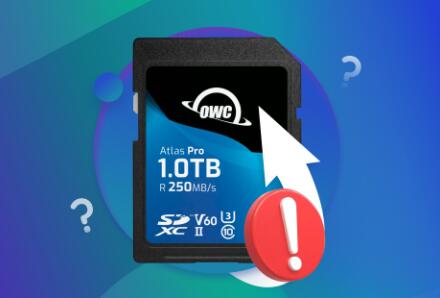SD cards are widely used for storing data in cameras, smartphones, tablets, and other devices. However, these small storage devices can become corrupted due to various reasons, such as improper ejection, virus infections, physical damage, or file system errors. Recovering data from a corrupted SD card can seem daunting, but with the right tools and techniques, it is often possible to retrieve lost files.
SD Card Corruption
Before diving into recovery methods, it’s essential to understand what SD card corruption means. Corruption can manifest in several ways:
File System Errors: The file system might be damaged, making it unreadable by your device.
Physical Damage: The card may be physically damaged due to wear and tear or mishandling.
Logical Errors: Corruption may occur without physical damage, often caused by improper ejection or abrupt power loss.

Step 1: Stop Using the SD Card
If you suspect that your SD card is corrupted, the first step is to stop using it immediately. Continuing to use the card can lead to overwriting the data you wish to recover. Avoid saving new files or performing operations that could further damage the card.
Step 2: Try Basic Troubleshooting
Before using recovery software, you can try some basic troubleshooting techniques:
A. Check the Card Reader and Device
Change the Card Reader: Sometimes, the issue lies with the card reader. Try using a different card reader or USB port.
Test on Another Device: Insert the SD card into another device (like a different camera or smartphone) to see if it can read the card.
B. Restart the Device
A simple restart can resolve minor issues. Remove the SD card, restart the device, and then reinsert the card.
C. Check for Physical Damage
Inspect the SD card for any visible signs of damage, such as cracks or bent pins. If you find physical damage, you may need professional data recovery services.
Step 3: Use Built-in Tools (Windows/Mac)
Both Windows and Mac have built-in tools that can help fix minor file system errors.
A. Windows
Insert the SD Card: Connect the SD card to your computer.
Open Command Prompt: Type cmd in the search bar, right-click on Command Prompt, and select “Run as administrator.”
Run CHKDSK: In the Command Prompt window, type chkdsk X: /f, replacing “X” with your SD card’s drive letter. Press Enter. This command will scan the SD card for errors and attempt to fix them.
B. Mac
Open Disk Utility: Go to Applications > Utilities > Disk Utility.
Select the SD Card: Find your SD card in the list on the left.
Run First Aid: Click on “First Aid” and then “Run” to check and repair the disk.
Step 4: Data Recovery Software
The software employs advanced scanning algorithms that ensure thorough and efficient recovery. Users can choose between quick and deep scans, depending on the severity of the data loss. The quick scan is perfect for recently deleted files, while the deep scan dives deeper into the storage device to uncover more elusive data. Additionally, Panda Assistant allows users to preview recoverable files before initiating the recovery process, enabling you to select only the files you need.
Security and data integrity are paramount in the recovery process, and Panda Assistant prioritizes this by ensuring that it does not overwrite existing data during recovery. This feature guarantees that your information remains safe throughout the process, making it a reliable choice for users concerned about data preservation.
Panda Assistant caters to users of all technical backgrounds. Its user-friendly interface guides you through each step of the recovery process, while advanced options allow experienced users to customize their recovery settings for optimal results. Comprehensive customer support is also available, providing assistance whenever needed.
Step 5: Professional Data Recovery Services
If software recovery methods fail, or if the SD card is physically damaged, you may need to consider professional data recovery services. These services can be expensive but may be your best option for recovering important data.
A. Research Recovery Services
Look for Reviews: Search online for reviews and ratings of local data recovery services.
Ask for Quotes: Contact multiple services to get quotes and understand their processes.
Check Success Rates: Inquire about their success rates and the types of damage they can handle.
Step 6: Prevent Future Data Loss
Once you’ve successfully recovered your data, take steps to prevent future data loss:
A. Proper Ejection
Always safely eject the SD card from your device before removing it. This ensures that all read/write operations are complete.
B. Use Antivirus Software
Keep your devices protected with updated antivirus software to prevent virus infections that could lead to corruption.
C. Regular Backups
Regularly back up important data stored on your SD card to another device or cloud storage. This way, you won’t lose critical files if corruption occurs again.
D. Avoid Overfilling
Try to keep your SD card under 90% capacity. Overfilling can lead to performance issues and increase the risk of corruption.
About us and this blog
Panda Assistant is built on the latest data recovery algorithms, ensuring that no file is too damaged, too lost, or too corrupted to be recovered.
Request a free quote
We believe that data recovery shouldn’t be a daunting task. That’s why we’ve designed Panda Assistant to be as easy to use as it is powerful. With a few clicks, you can initiate a scan, preview recoverable files, and restore your data all within a matter of minutes.
Subscribe to our newsletter!
More from our blog
See all postsRecent Posts
- Dell backup and recovery windows 11 2025-04-21
- Dell os recovery tool keeps crashing 2025-04-21
- Raw hdd data recovery 2025-04-21

 Try lt Free
Try lt Free Recovery success rate of up to
Recovery success rate of up to









